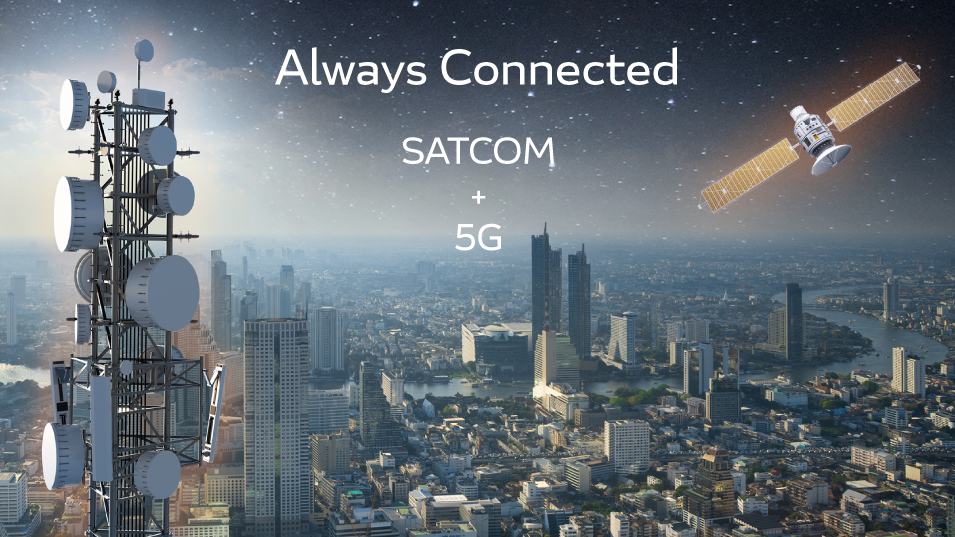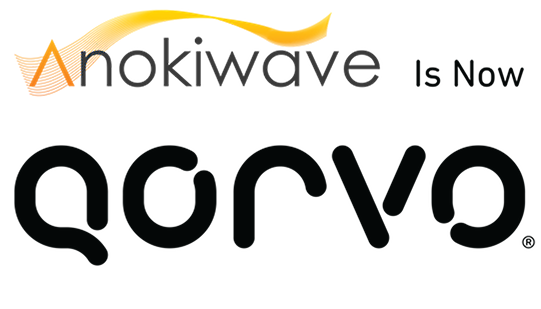SATCOM Market Update Part 4 - Looking to the Future
 |
Ryan Jennings |
|---|---|
|
|
|

As the market converges to an integrated 5G network of networks, Anokiwave enables 5G and SATCOM coexistence with high-performance, highly integrated IC platforms in commercial volumes that are compact, cost effective, and deliver faster time-to-market for OEMs.
This new blog series provides a complete overview of the SATCOM market drivers, how the market is defining the user terminals for the systems, how Anokiwave enables SATCOM terminals, and a look into the future of coexistence and new generations of solutions.
Download our latest whitepaper with a deeper discussion on this topic.
Part 4 – Looking to the Future of SATCOM
In this blog, we describe:
- The future needs of the market as it converges to an integrated 5G network of networks that include terrestrial and non-terrestrial systems.
- New use cases evolving that demonstrate 5G and SATCOM convergence and coexistence, and how Anokiwave enables both markets with high-performance, highly integrated IC platforms in commercial volumes that are compact, cost effective, and deliver faster time-to-market for OEMs.
In this blog, we look at the antenna terminal performance considerations including thermal, architecture, and cost and Anokiwave's solutions
Looking to the Future:
Exponential growth in demand for ubiquitous connectivity and continued explosion of 5G use cases will result in a network infrastructure that incorporates terrestrial 5G networks and multi-orbit constellations to increase the scale and scope of access to communications networks. In a 5G network, satellites are ideal to provide additional backhaul, to incorporate redundancy to critical segments, and to provide remote and rural areas with greater connectivity.
A common intersection of these trends is the need to support both types of systems with mmW phased array active antennas. Anokiwave has been in these markets for over 20 years. We have multiple generations of both SATCOM and 5G products in volume production, enabling us to offer OEMs unparalleled application expertise. This allows our customers to develop better array designs that are faster time to market as well as, and most importantly, the experience to support our customers who are expanding their networks beyond traditional 5G or SATCOM use cases.
In this blog, we look at the antenna terminal performance considerations including thermal, architecture, and cost and Anokiwave's solutions
5G for Non-Terrestrial Applications:
Approximately 40% of the world's population does not have access to efficient internet connections.11 Only a small portion of that demand can be met through direct satellite connections, however there is a growing use case where the satellite connections are used for backhaul to support other communications services.
NGSO (non-geostationary orbit) satellites will play a key part in extending cellular 5G networks to air, sea, and other remote areas not covered by small cell networks. For the end-user, satellites enable a seamless extension of 5G services from the city to airplanes, cruise liners, and other vehicles in remote locations.
In this blog, we look at the antenna terminal performance considerations including thermal, architecture, and cost and Anokiwave's solutions
SATCOM Joins the Telecom Market:
The integration of non-terrestrial networks into the 3GPP 5G standards marks an opportunity for satellite service providers to provide integrated solutions for a mass market. A standard architecture for all communications opens opportunities for satellite service providers, ranging from backhaul and traffic unloading to mobile edge computing and connectivity services to mobile users.
Use cases are already beginning to demonstrate ways in which the coexistence and convergence of terrestrial and non-terrestrial networks will evolve. As with all new communications networks, new use cases will develop that are even beyond our imaginations of today. We believe the optimum use case for future convergence and coexistence of terrestrial and non-terrestrial networks will happen once the infrastructure is built out. Many applications can be envisioned from smart cars to global shipping, all of which are driving volume demands that ultimately drive down the cost of user terminals utilizing phased array active antennas.
In this blog, we look at the antenna terminal performance considerations including thermal, architecture, and cost and Anokiwave's solutions
Extending 5G Networks Beyond Densely Networked Areas:
Another emerging application of network convergence is for 5G backhaul, for which LEO and MEO services are well suited given the low latency (20x improvement over GEO) and throughput capabilities, enabling better connectivity options in rural areas. This is a great complement, and many believe alternative to ground-based fiber connections.
As demand for connectivity continues to increase exponentially, satellites will need to serve areas outside highly networked cities for purposes such as connections on the move, critical emergency services, edge networking, and connected devices (IoT).
According to the Wilson Center, a US based policy forum group, an evolution of the underpinning technology and the business models of satellite companies make this integration both technically possible and economically feasible.2
The active antennas used in the applications described in this blog can be implemented using Anokiwave beamformer ICs (BFICs). We continue to innovate and develop new products to make these implementations easier, more cost effective, and with improved performance. Our next generation of BFICs are pushing the limits of IC performance and cost curves to a new level, with similar architectures of prior generations to maximize existing designs. These advancements are demonstrated in our 4th generation 5G ICs and 2nd generation SATCOM ICs which have been widely adopted by the major equipment manufacturers.
Thank you for reading our four-part SATCOM series. For additional information on our SATCOM or 5G products, tools, and resources, please visit the respective pages on our website to learn more.
In this blog, we look at the antenna terminal performance considerations including thermal, architecture, and cost and Anokiwave's solutions. In this blog, we look at the antenna terminal performance
1The European Space Agency Space for 5G and 6G. Web Site
2Wilson Center - Article, "The Role of Satellites in 5G Networks", 1 October 2021. Article Link

